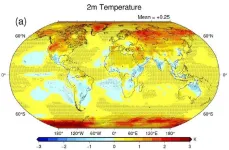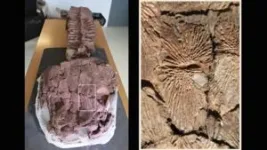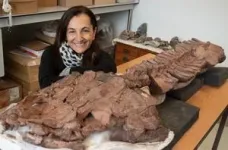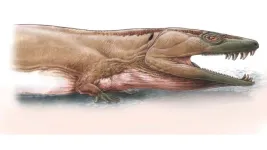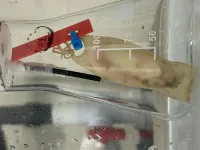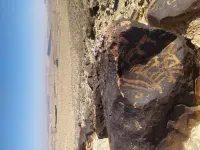Exploring the radiative effects of precipitation on arctic amplification and energy budget
The new study discusses the importance of incorporating the radiative effects of precipitation in climate modeling.
2024-07-05
(Press-News.org)
One of the key metrics for climate modelling is radiative forcing. Most climate models, including the general circulation models (GCMs), focus on the effects of different atmospheric factors on radiative forcing. However, there are still large uncertainties in satellite observations and multi-model simulations associated with some atmospheric factors. Among them, clouds are a known source of uncertainty in GCMs, leading to radiative biases. However, another possible source of radiative uncertainty is associated with precipitation.
In principle, precipitating particles affect radiative forcing by disrupting incoming shortwave and outgoing longwave radiations. But most conventional GCMs in the Coupled Model Intercomparison Project Phase 6 (CMIP6) treat precipitation diagnostically and exclude the radiative effects of precipitation (REP). Extracting the magnitude of REP in climate models is challenging because of complicated atmosphere-ocean feedback and multi-model variabilities. To this end, a new study, published in npj Climate and Atmospheric Science on 19 June 2024, led by Associate Professor Takuro Michibata from Okayama University investigated the influence of REP on radiative forcing at different geographical scales.
Dr. Michibata employed three sub-versions of the Japanese GCM, MIROC6, incorporating different precipitation and radiative calculation treatments. These sub-versions included diagnostic precipitation without REP (DIAG), prognostic precipitation without REP (PROG REP-OFF), and prognostic precipitation with REP (PROG REP-ON), to quantify the influence of precipitating particles on the radiation budgets and hydrological cycles at both global and regional scales. “In addition to modifying the MIROC6 model, we also used 34 climate models from the CMIP6 data archive to better understand the REP on the seasonal variations of the Arctic amplification. Thus, by using sets of simulations and multiple satellite observations, we systematically documented the significance of REP on the global and regional hydrological cycle and energy budget,” explains Dr. Michibata.
The study found that REP affects not only the local thermodynamic profile but also the remote precipitation rate and distribution by altering atmospheric circulation. Due to the precipitating particles in the atmosphere, there is a collective reduction in the net shortwave radiation ("parasol effect”). At the same time, the inverse is observed on the net longwave radiation ("warming effect”), especially in the Arctic zone. As per PROG REP-ON, this results in a weakening of the radiative cooling in the atmosphere and thus slowing down the hydrological cycle at a global level.
The surface warming is more pronounced in the polar regions, with a noticeable increase in surface temperature—by more than 1 K on an average—during winter, as compared to the simulation without REP. This temperature increase is more than twice as large as the summer warming. The study basically emphasizes on the magnitude of surface warming in PROG REP-ON, which is stronger in winter than in summer. This was further verified with the 34 CMIP6 models that also showed systematic variations in Arctic amplification upon factoring in REP.
In contrast, the temperature variations over tropical and subtropical regions were found to be relatively small. In fact, the three-dimensional radiation budget analysis showed that precipitation change was the main effect of REP in the tropics, as opposed to the significant temperature change in the polar regions.
These results indicate that REP has a significant influence on the radiation budget and hydrological cycle at both global and regional scales, which can provide valuable information on REP’s impact mechanism on temperature and precipitation changes. Furthermore, this implies that including REP in GCMs could improve precipitation and temperature biases in climate models and therefore improve the accuracy of these climate simulations against observational evidence.
“Current climate models still have large uncertainties, particularly in simulating the Arctic climate. Given that the Arctic climate is remotely linked to mid-latitude meteorology and weather, this study will contribute towards the improvement of climate models for more accurate prediction of future climate change and changes in the occurrence of extreme weather. Moreover, the process-level understanding in the REP will be useful for other modeling groups in future model development,” concludes Dr. Michibata.
About Okayama University, Japan
As one of the leading universities in Japan, Okayama University aims to create and establish a new paradigm for the sustainable development of the world. Okayama University offers a wide range of academic fields, which become the basis of the integrated graduate schools. This not only allows us to conduct the most advanced and up-to-date research, but also provides an enriching educational experience.
Website: https://www.okayama-u.ac.jp/index_e.html
About Associate Professor Takuro Michibata from Okayama University, Japan
Takuro Michibata is an Associate Professor at the Department of Earth Sciences, School of Science at Okayama University, Japan. He leads the COMETS Laboratory (Cloud Observation and Modeling for Earth Technology and Science) at the university focusing on cloud physics and climate science. He has guided several graduate and undergraduate students who have received recognition for their work with him. Dr. Michibata’s research mainly entails working on climate research centered on numerical modeling of aerosol, cloud, and precipitation processes and satellite analysis. He is also engaged in the development of a "satellite simulator" software that connects numerical models with satellites. His research has been published in well-known journals, with many citations.
END
ELSE PRESS RELEASES FROM THIS DATE:
2024-07-05
Insilico Medicine(“Insilico”), a clinical-stage generative artificial intelligence (AI)-driven drug discovery company, has successfully delivered the second preclinical candidate compound (PCC) in its collaboration with Fosun Pharma in June 2024, a potential innovative therapeutic using synthetic lethal strategy for the treatment of solid tumors. Insilico expects to submit the pre-IND application for this candidate with the CDE in 2024 Q4.
When initiating the collaboration, Fosun Pharma proposed four targets of interest, and the target of the PCC nominated in this program is one of them and plays a critical role in DNA damage repair mechanisms. Insilico’s ...
2024-07-05
After three years of meticulous study, an international team of researchers has announced the discovery of a fossilised giant basal tetrapod in Namibia's arid heartland in Nature. A basal tetrapod is an early four-legged vertebrate with fingers and toes, which lived during the transition from water to land. These ancient carnivores are among the earliest ancestors of all modern animals. This nearly complete 3-meter-long skeleton of an adult, unearthed in the Ugab River valley in Damaraland, is the largest ever discovered. This discovery is significant because it challenges previous assumptions that these early four-legged vertebrates, which lived during ...
2024-07-05
An ongoing research project into the impact of offshore windfarm electromagnetic fields on shark development reveals that the alternating electric currents produced by underwater windfarm cables seems not to disrupt the growth or survival of sharks.
Offshore windfarms are one of the most common marine renewable energy (MRE) producers, and are seen as a pivotal technology in the global transition towards renewable energy and away from fossil fuels that contribute to climate change.
However, their proliferation in marine environments raises new questions about their impacts on wildlife. Energy operators and ...
2024-07-05
To perform quantum computations, quantum bits (qubits) must be cooled down to temperatures in the millikelvin range (close to -273 Celsius), to slow down atomic motion and minimize noise. However, the electronics used to manage these quantum circuits generate heat, which is difficult to remove at such low temperatures. Most current technologies must therefore separate quantum circuits from their electronic components, causing noise and inefficiencies that hinder the realization of larger quantum systems beyond the lab.
Researchers in EPFL’s Laboratory of ...
2024-07-05
Microbes that are used for health, agricultural, or other applications need to be able to withstand extreme conditions, and ideally the manufacturing processes used to make tablets for long-term storage. MIT researchers have now developed a new way to make microbes hardy enough to withstand these extreme conditions.
Their method involves mixing bacteria with food and drug additives from a list of compounds that the FDA classifies as “generally regarded as safe.” The researchers identified formulations that help to stabilize several different types ...
2024-07-05
Agroecology—a science, practice, and movement which seeks social, political, economic, and environmental sustainability in the global food system—is gaining momentum in the U.S., according to a new Dartmouth-led commentary in Nature Food. As the co-authors report, the approach requires coordination between scientists, farmers, and activists.
"When it comes to sustainable food and agriculture, people in the U.S. tend to be more familiar with organic farming, the production of food without synthetic inputs, and regenerative agriculture, which primarily strives to restore soil health," says lead author Theresa Ong, an assistant professor of environmental studies ...
2024-07-05
A mysterious remnant from a rare type of supernova recorded in 1181 has been explained for the first time. Two white dwarf stars collided, creating a temporary “guest star,” now labeled supernova (SN) 1181, which was recorded in historical documents in Japan and elsewhere in Asia. However, after the star dimmed, its location and structure remained a mystery until a team pinpointed its location in 2021. Now, through computer modeling and observational analysis, researchers have recreated the structure of the remnant white dwarf, a rare occurrence, explaining its ...
2024-07-05
The Negev desert of southern Israel is renowned for its unique rock art. Since at least the third millennium BCE, the hunters, shepherds, and merchants who roamed the Negev have left thousands of carvings (‘petroglyphs’) on the rocks. These figures are mostly cut into ‘desert varnish’: a thin black coating on limestone rock, which forms naturally. Many represent animals such as ibexes, goats, horses, donkeys, and domestic camels, but abstract forms also occur.
Now, a study published in Frontiers in Fungal ...
2024-07-04
Pseudomonas aeruginosa – an environmental bacteria that can cause devastating multidrug-resistant infections, particularly in people with underlying lung conditions – evolved rapidly and then spread globally over the last 200 years, probably driven by changes in human behaviour, a new study has found.
P. aeruginosa is responsible for over 500,000 deaths per year around the world, of which over 300,000 are associated with antimicrobial resistance (AMR). People with conditions such as COPD (smoking-related lung damage), cystic fibrosis (CF), and non-CF bronchiectasis, are particularly susceptible.
How P. aeruginosa evolved from an environmental organism into a ...
2024-07-04
An aerogel made from gelatin and DNA surpasses 100% solar reflectance, yielding exceptional radiative cooling, a new study reports. It is also biodegradable. The novel approach paves the way for high-performance next-generation radiative cooling materials, promoting environmentally friendly advancements in the field. Sustainable, energy-efficient, and environmentally conscious cooling technologies are crucial for adapting to our rapidly warming world. Compared to traditional refrigeration systems, passive radiative cooling technologies consume less energy and emit fewer greenhouse gasses, making them ...
LAST 30 PRESS RELEASES:
[Press-News.org] Exploring the radiative effects of precipitation on arctic amplification and energy budget
The new study discusses the importance of incorporating the radiative effects of precipitation in climate modeling.
